UP TO THE MINUTE
Exceptional Emulate™ Application - PODCAST TRANSCRIPT
July 29, 2024 at 12:00 p.m.Editor's note: The following is the transcript of a live interview with Kiki Redhead and Brynn Wildenaur of Sherwin-Williams. You can read the interview below, listen to the podcast or watch the full recording.
Karen Edwards: Hello, and welcome to another episode of MetalCast from MetalCoffeeShop. I'm your host, Karen Edwards. Today, we are going to be talking about Sherwin-Williams Emulate architectural metal coatings. These things are just one of the coolest things that I have seen come out recently. I've got the experts here, Brynn Wildenaur and Kiki Redhead. We're going to do a deep dive on this topic today.
But before we do, let's get started with introductions. Maybe, Brynn, could you introduce yourself and tell us what your role is there at Sherwin-Williams?
Brynn Wildenaur: Yeah. I am the architectural color designer for the coil coating business at Sherwin. I work on new product development. Also, color collections for internal use for color cards in things like Emulate, but also for customers as well. Then along with that, we do a lot of trend research and trend forecasting here at the design house.
Karen Edwards: Excellent. Kiki, please introduce yourself.
Kiki Redhead: Yeah. I'm the global manager of color, materials, finishes and trends. I manage the design house and all the designers that specialize in different areas of expertise. Particularly here, in this case, with Brynn on the architectural and coil coating side of the business.
Yeah. I think Brynn explained it really well. We do a lot of development of colors, ideation of colors and materials. We work on developing new collections so that we can inspire our customers with ideas for how to apply colors to architecture.
Karen Edwards: Brynn and Kiki were here with Heidi Ellsworth on an episode of Roofing Road Trips. They really explored the how it comes about. I would recommend heading on over to that episode if you want to hear the research, the data, the picking up samples, everything that goes into developing these lines. It really is amazing and impressive.
If you don't know, the Emulate architectural metal coatings really mimic nature. We've got three different collections. We've got wood. We've got stone. And we've got metal. We're going to explore those today on this episode, because each of these collections has four patterns.
Let's get started with wood. Who wants to kick that off?
Brynn Wildenaur: I can start. We really started with where the market is at right now, with where the woods are living in the market. Our biggest motivator with the wood collection is to inspire people to think a little bit outside the box. Because we see wood as a building product very commonly and very frequently, so we wanted to push the boundaries. But also, have some more safe and traditional options.
We started with the oak. And then we moved into the walnut, which we see those pretty commonly. They can be very flexible options. But we pushed the envelope with the colorways. That's where we really focused on our specialty, was really playing with the colorways and making some options that pushed the boundaries of maybe where most people are comfortable.
Then we also did a burl, which is more of an exotic type pattern. Which we designed in-house, which is pretty cool and unique. That has a lot of opportunity for different profiles, different options for end use. It could be very high end, it could look pretty rustic.
Then the last one in the wood collection is a barnboard. That's pretty self-explanatory, but it has a lot of great depth. Balance of warm and cool colors and looks really fantastic when it's planked out into boards.
Kiki, please add anything.
Kiki Redhead: Yeah, yeah. I think one of the unique elements here is that, because these are multi-layered, you're getting this pattern but that doesn't look flat. It really creates that depth with the multi-layers. There could be two layers, there could be three layers. That creates this added extra interest of almost, when you're looking at it from far away, you would think that it's textural and you might want to reach out and touch it. Then you're like, "Oh, that's smooth." But it looks like these different wood grains and these different species of woods.
Then taking that grain pattern, and switching up the colorways. This can be a really difficult task of figuring out how to put these colors together to really make it look like oak. Like an English oak, or to make it look like a golden oak, or a red oak. How do you get that colorway, if you're looking for a specific tone within a wood species? That's where Brynn and I really curated these different wood combinations of colors to create those, both traditional, and then like Brynn said, some out-of-the-box wood grains and patterns on that as well.
Having the opportunity to really focus on how these colors are going to mix and mingle when they're applied to the same profile, or the same siding design, whether it's a linear, or a vertical type of application. And how that wood grain is going to translate with multiple colors, as part of the visual effect.
Karen Edwards: When you say layers, is that printed layers, right? That's where you get the variations.
Kiki Redhead: Yes.
Brynn Wildenaur: Yes. These are printed through a rotogravure print process. It goes through the coil line in a couple of unique ways. You have the primer, and then the color coat. Then it goes through a process where there is an ink layer, we'll call it, where there is a cylinder with small cells carved out of it that pick up ink, and then drop it down onto the color coat of the coil. Then it gets a clear coat on top, most frequently. It goes through a very unique process, through the coil line. Then it can be formed into many different panel options. Which makes it really unique, and gives a variety of options as to what the end use can be. We wanted to make sure we hit the mark on lots of different application and end uses.
Kiki Redhead: You'll see these wood applications in everything from light commercial, to something like a barnboard would look fantastic paired with the barndominium style of residential. Or even in agricultural type buildings. We have that mix of the different wood looks.
Something like a walnut looks fantastic with the whole modern, or even a nod back to Mid-Century modern. You'll get a little bit of maybe a historic feel or a nostalgic feel, but then you can also make it look really contemporary for today. Especially when you start seeing some of the different colorways that we've come up with to represent each of these species.
Karen Edwards: Wow. Yeah, wood is beautiful. There's so many variations, and styles, and different types of wood. But inherently, it doesn't last as long. It's not as durable. You're providing that same beauty and that same look, but with a durability. I want to talk a little bit more about that, but I want to get through the other types first. And then, we'll talk a little bit about performance, and durability, and testing.
Let's move on to stone. Tell us a little bit about that one.
Brynn Wildenaur: The stones were an interesting one. We went back and forth a lot with all of the different sales teams and members that were stakeholders in this project on our end because there were lots of different opinions on who would want the stones. Would it be high end architects? Would it be people building barndominiums and more agriculture structures? Would it be residential homes? Kiki and I were like, "Why can't it be everybody?"
We really played around a lot with where do micas, some sort of sparkle, fit in here? Where do maybe more of a concrete look? We talked a lot about that trend. Again with the durability and the great benefits of our coatings come in, but mimicking concrete, there's a lot of benefits to that. We wanted to make sure that we hit the mark for all of our different stakeholders without having an overwhelming selection.
In the stone collection, we have a marble that has some fantastic colorways, including a mica option. We've got a travertine, which has a couple of extra layers into it. It's got a lot of great depth. Again, that color balance, we worked really hard on making sure that it hit the mark. It's one of those that looks like it could be replicating a couple of different types of natural materials, so it's open for interpretation but a really beautiful material. Then we've got a travertine. Then we also have the concrete. We've got different interpretations on every avenue within the stone collection.
Kiki Redhead: Yeah. I want to expand a little bit on what Brynn was talking about. Using some of these patterns, and customizing or changing up, we've obviously worked very diligently on creating colorways that represent a mimicry of the specific type of stone that we're trying to emulate.
The idea here though, is that these are inspirational. With what Brynn had mentioned about we're not only mimicking with the travertine, yeah, traditional Italian travertine marble. But you could also take this, customize the colors. Say, "Hey, I want to do this base, and these two top colors, because I want to make this look more like a stone with a terracotta type stone. I want to do the rusty reds, and I want to bring in an orange, and I want to maybe bring in a copper with a mica in it so you get that sparkle."
When you think about going to a stone yard, which was one of the most fun aspects about doing this collection, was all the fun places we got to go out and have boots on the ground. Trade shows, stone yards, lumber yards. You name it, we went there to go check things out. With the stone yards, and you'd go outside, and on a sunny day, you'd see all the slabs of stone out there. You'd see the mica in the natural stone, shimmering back at you. Both in our marble look and in our travertine pattern, we incorporated some of that as well. Both in our colorways that we have developed and we're showcasing in our brochure that goes along with the program, and on the website. Then also, there's options for customization, and being able to bring in mica with those looks as well.
Karen Edwards: Wow.
Brynn Wildenaur: The one thing I'll also add onto there is for the terrazzo specifically, we typically see that as a floor material. We wanted to reimagine that. We knew that it was really important to include that in the collection, as it becomes more and more popular in the industry. But where we envisioned was walls and ceilings. In exterior walls, interior walls and ceilings, which I think is really a unique way of looking at that material against where it's traditionally used. We wanted to showcase some application images and really inspire people to think about it differently. Even if they don't move forward with our specific colorways, this collection is really here to inspire people to think about how to change up where their vision is, and see the possibilities behind rotogravure printing.
Karen Edwards: Wow. Yeah, that's really cool because you don't think of terrazzo on a ceiling. It's a floor, it's always been a floor. You're really challenging those design traditions, I guess, and inspiring people to think new. New and different.
Brynn Wildenaur: Right, absolutely.
Karen Edwards: Yeah. Wow. Okay, let's talk then about metal and what we have to offer there.
Brynn Wildenaur: Yes. Metal is another really fun one that we got to work on. We got to be a little bit more creative with this one, which is great.
As the design trend, Kiki and I, we're doing a lot of research all the time. But one of the areas that we've seen come back up again and again over the last six, seven years in building products specifically is perforated metal. Another one is biophilic design. That one, again, just keeps gnawing at us, maybe in a different term, but it keeps coming back.
Karen Edwards: Define that for me, because I don't know what biophilic design is.
Brynn Wildenaur: Biophilic design is bringing nature into the designs. It's really a simple term, but you've got to put a little fancy spin on it.
What we decided to do was join the two together, and design a faux perforated leaf pattern, which is very unique and interesting. Please go check it out on our website because it's really beautiful. This is another place where we got a little bit creative with the colorways. We used mica in a couple of options. And really had fun being inspired by nature and the trends that we're seeing in the market, and a really unique way of using the rotogravure printing in such an unexpected way. It turns out that it is one of the ones that catches people's eyes most frequently to dive deeper into the collection, which I think is a great way to gauge the collection. Maybe it's not their top one that they're going to spec for building, but it's a great eye-catcher for the collection there.
Then we have a couple of weathered metal options, which we're seeing is pretty standard in the market. That is great, we wanted to include that. But again, we reimagined that colorways. Taking the patina copper, the rusted looks, the blackened steels, updating them to work with the trends that we're tracking every day here at the design house to fit the trends that we're seeing for the next five, 10 years. We wanted to make sure that we're aligned with what we're seeing in the market and where we're moving forward with, so we're staying current and forward-thinking.
We've got burnished slate. Which is another one that, it's a little bit subtle, and that's great. We love a subtle moment. But it has a lot of depth. It's one of those that brings you in. It looks textured. It looks like natural material. It has a lot of visual depth and a lot of visual action, without being super high contrasted.
Then the last one we have in the metal collection is hammered. This one looks like somebody took a hammer to a piece of copper or a piece of steel, and hammered it out. It looks really cool and textured. It has a lot of action going on. Again, without being too much. It's another one of those you want to go up and touch, because it just looks so realistic without distracting from the other materials on a facade.
Karen Edwards: Wow.
Kiki Redhead: One of the keys to the burnished and the hammered is, like Brynn had mentioned briefly, that low contrast. We are really critical when we're choosing the base coating color, and the "ink" color of that semitransparent coating that's tinted, that's going to create that patterned look. And making sure that the tone of those colors, where they sit in color space isn't too far apart so that you're not creating a jarring look.
This can be really, really difficult for someone that doesn't have a lot of experience in the coatings and color industry, because you really have to know what's going to happen when you're going to be seeing one color through another color. Then what's going to happen in certain areas, where those colors are going to mix together? Because someone could look at this and say, "How could this only be two colors? I'm seeing five or six." That's those areas where you're basically seeing that base, and then you're seeing that ink semitransparent over the top. You're going to have areas where you're going to see multiple variations of those two colors mixing together. If you've got colors that are too far apart, or they're too contrasting, or they're from opposite color families, you're going to start to create a discord in the color harmony of the combination of the colors.
Subtlety in some of these is really, really key in order to create this very harmonious, mimicry type of look. That's another term that we often use. Biophilia is one of, I'll say interior design buzzwords right now. If you would have asked the same question five or six years ago, it would have been biomimicry at that time. Now it's biophilia. It's just some of these words that pop up when you're talking to interior designers and architects out in the market, that really have their pulse on some of the trends that are happening in design. We like to try to incorporate those ideas as much as possible into our designs, of the patterns and the colorways, so that it will create the same sense of the visual experience that the designers and the architects are trying to create in their work.
Karen Edwards: Brynn?
Brynn Wildenaur: I think that that's a really important part, is if you have too much contrast. The easiest example is in the wood collection. If you have too much contrast between the base coat and that ink layer, it will start to look more artificial. Another really important part with that is that the ... Sorry. The gloss level becomes really crucial. The higher the gloss level, it also looks more of an artificial finish rather than a low gloss, because we see that lower finish in nature, in real life.
Karen Edwards: Yeah, yeah. These are just beautiful. You mentioned all the different applications. You've mentioned interior walls, interior ceilings, exterior. What are some of the other ways that you're seeing these put to use? Are there any that maybe you didn't really expect?
Brynn Wildenaur: We had some interesting opportunities to talk with customers about where they would want to use these types of coatings. Elevators was a really interesting one. We had a lot of people ... The perforated leaf, we had a customer come to us and say, "Hey, we're working on the exterior of a zoo. Let's work on this for a zoo, that would be super cool." We've got divider walls. We've got the entrances of buildings. They were like, "This would really make sense as the attention grabber of, hey, you're supposed to enter the building here." There was a lot of really great opportunities within all of the different segments that we were exploring.
But I think the interior was the most unexpected. About the, "Oh, hey, we'd love to use this as," like the terrazzo on the ceiling. Or the elevator cabs. All of these different little things. We were like, "Oh my gosh, this is such a great opportunity to put such a unique finish."
Karen Edwards: Yeah, agreed. Kiki, anything that had surprised you, or that you found unexpected?
Kiki Redhead: Yeah. I think a lot of what Brynn had mentioned were the projects that really were almost surprising to us, or light bulbs for us.
But another one I'll add is the retaining walls in parking lots around parking structures. And applying the perforated leaf to that. Now instead of feeling like you're in a concrete jungle when you're parking, all of a sudden you feel like you have this relationship with nature and landscape all around you. That was some really fun appearances to get to see that.
Karen Edwards: Excellent. Okay, I mentioned earlier I do want to talk about the durability, the longevity, the performance, the testing. Because these, they're beautiful, and we don't want to see them in five years, 10 years, not still be beautiful. Can you talk a little bit about what that looks like? What goes into ensuring that these products are going to perform and last?
Brynn Wildenaur: The wonderful thing about our Emulate program is that it's using our coatings that have been tried-and-true for a very long time. All of the things that we're working with in here are from our Fluropon, and WeatherXL, and PolyPREMIERE systems. Those have been in the market for a long time. Have been tested rigorously, over, and over, and over again. Those, we have a lot of confidence in. We also have a lot of confidence in the rotogravure print technology. We've been partnering with these customers for a long time, to create these types of patterns on metal.
What we did, in this circumstance, is we reimagined what's on the market right now. We have total confidence that this is a great product line. We did do more testing beyond what we typically would do for a product line like this. We already know the product is great. We did do some additional testing with our test fence in Fort Myers, Florida, just to ensure that everything is all great, and good to go. But it is our standard products, standard technologies, everything like that.
That's the beauty of it, is we're not trying to convince anybody that the product is good, as well as convince them that the patterns are good as well.
Karen Edwards: Yeah. It's not new. I like that you said you reimagined. Because it's been there for years, it's proven, it's tested. You're just presenting it in a new way, and a really cool way.
Brynn Wildenaur: Yeah, absolutely.
Karen Edwards: Wow. I know that everyone is just listening to this and they're not having a visual of what these look like. But I have been on the website, you have a great video out there that talks a little more about the process. There's a beautiful brochure. Because it's one thing to imagine what these things look like, but it's another thing to really see it, and see the photos of where people have used it.
I'm just curious, because you guys, you put an incredible amount of research into this, and testing, and trials. Once it's out there on the market, do you get to go out and see the finished product?
Brynn Wildenaur: We are looking forward to see our first project here, in a couple of weeks I believe. They'll be putting it up. We are looking forward to that. We have run our first couple batches in full production. It is in the works, it is out there and live in the market. We're hoping that we hear more people looking forward to customizing any Emulate patterns to work in their product lines.
Karen Edwards: Wow. That's exciting. Kiki, what are you looking forward to?
Kiki Redhead: I'm really looking forward to getting to not only see these in application, but also to see how architects and designers take the inspiration, and use it to emulate their style. And to be able to customize, and see what they come up with as well. Because we know that there's a lot of great creativity out there, and we're just excited to see how it's going to be used. As well as to see which patterns become most trending, because we've got that mix of very classic and very traditional, and a pop, or an unexpected. Or even maybe something you didn't know you needed, and now all of a sudden you see it and you're like, "Oh my gosh, we need that in our line of prints and patterns." Or an architect says, "Oh my gosh, I need that to go on the exterior of this project that I'm working on." Just seeing, over and over, and tracking how these different patterns appear that way.
We do, as Brynn has mentioned, as I've mentioned on a few different times that we've had the wonderful opportunity to chat with you, Karen, is a lot, a lot of trend research, a lot of consumer research, a lot customer research, voice of customer, really understanding where the market is going. Not just for today, but for next year, five years, 10 years down the line. And paring our performance, and our understanding of the durability of our products, but then also understanding the longevity of these prints and patterns that will have in the marketplace, a lasting effect, it's just a really exciting opportunity to see how that is going to play out. We'll continue to track that.
Karen Edwards: Yes. We will have you back on a regular basis, because we want to know as well, as do our listeners. Where are things going, what's popular and what's happening out there?
Brynn and Kiki, I want to thank you so much for being here today, and diving deeper into the different products, and collections, and colors, and patterns. It's been really, really exciting. I want to encourage everyone, visit Sherwin-Williams directory on MetalCoffeeShop. Visit Sherwin-Williams on your website. It is coil coatings, right?
Brynn Wildenaur: Coil.sherwin.com.
Karen Edwards: Coil.sherwin.com.
Brynn Wildenaur: Yeah.
Karen Edwards: Thank you. Yeah, check it out because there's some beautiful pictures. There's some, like I said, video. You can really see what this collection can do. Emulate certainly is the right name, because it really does look like nature.
Thank you all for listening to this episode. We're glad that you were here. We encourage you to please follow us on social media, subscribe, so that you don't miss a future episode. We will see you next time on MetalCast. Thanks.
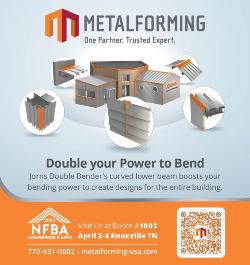
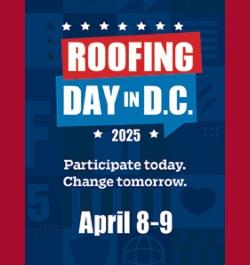

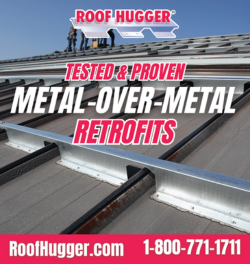








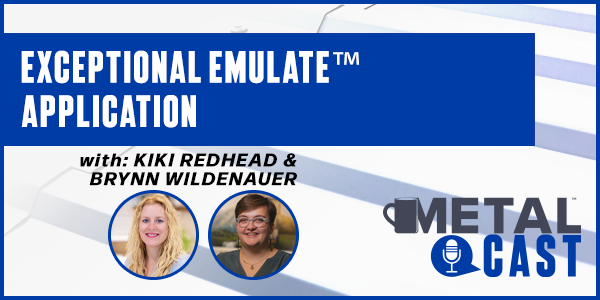
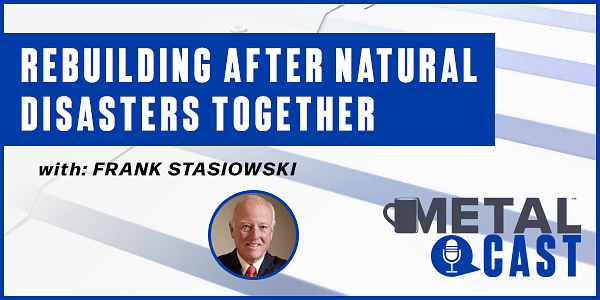

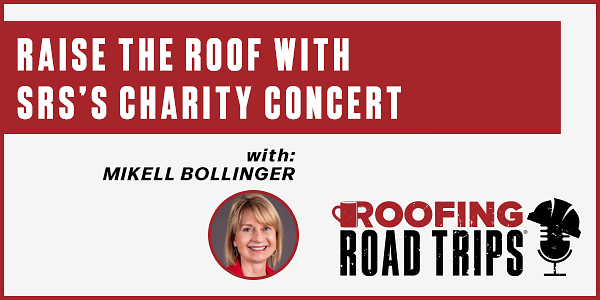


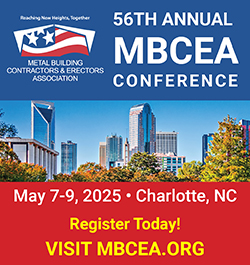
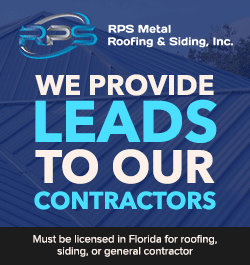


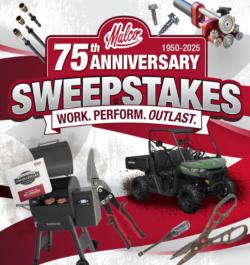
Comments
Leave a Reply
Have an account? Login to leave a comment!
Sign In